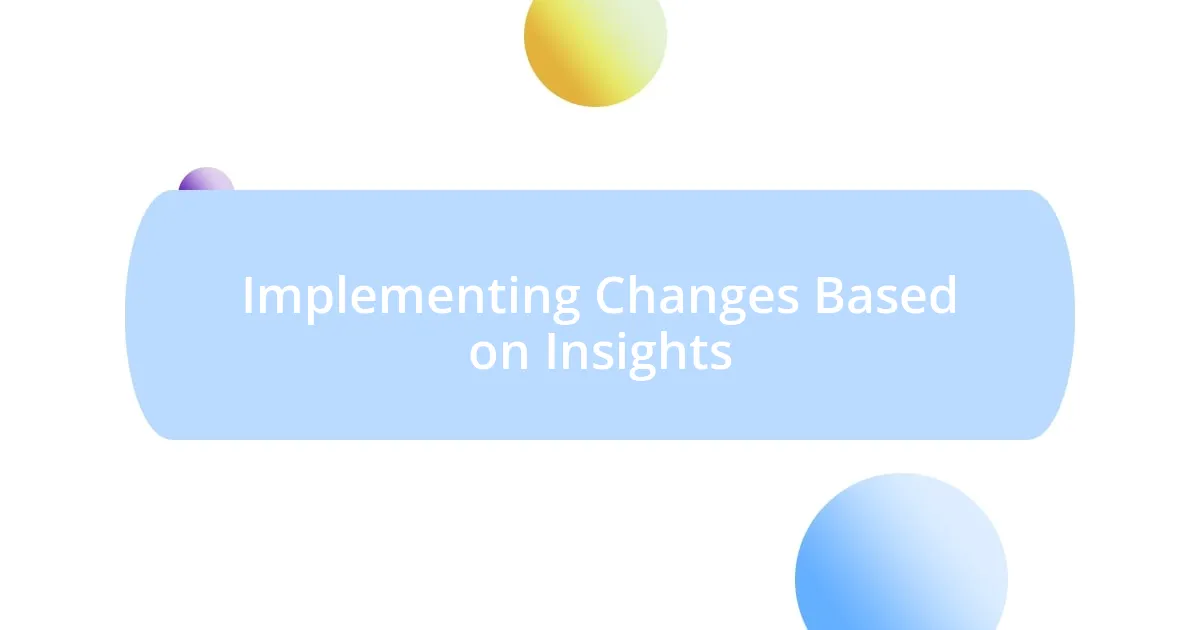Key takeaways:
- Effective donor surveys should include both quantitative and qualitative questions to uncover deeper motivations and emotional connections.
- Analyzing donor feedback can reveal valuable insights that foster personalized communication and enhance donor satisfaction.
- Implementing changes based on donor insights, such as improving transparency and enhancing communication, can strengthen relationships and loyalty.
- Measuring the success of surveys goes beyond response rates; it involves understanding how feedback translates into stronger donor engagement and commitment.

Understanding Donor Surveys
Donor surveys are a vital tool for understanding the motivations and experiences of your supporters. I remember the first time I took part in analyzing feedback from a survey; it was like discovering a treasure trove of insights that revealed not just what donors wanted, but also how they felt about our organization’s impact. Have you ever wondered what drives donors to give repeatedly? It’s often the emotional connection they feel, coupled with a desire to belong to something larger than themselves.
When designing donor surveys, it’s essential to ask the right questions that tap into these emotions and not just surface-level metrics. For instance, instead of merely inquiring about donation amounts, I’ve found it invaluable to ask how our work resonates with donors on a personal level. This approach has helped us discover unique stories, like the one donor who shared how our mission directly impacted their family, reinforcing their commitment and passion for our cause.
The effectiveness of a donor survey hinges on its ability to make donors feel valued and heard. I recall a particularly fruitful survey where we implemented open-ended questions, allowing donors to express their thoughts freely. This led to unexpected feedback that not only informed our strategies but also reinforced a sense of community. How often do we truly ask for genuine feedback that goes beyond satisfaction ratings? It’s this deeper dialogue that can transform a donor’s relationship with an organization.

Importance of Effective Surveys
Effective surveys serve as a bridge between organizations and their donors, fostering a deeper understanding of donor motivations. I vividly remember a survey we conducted that yielded responses illustrating the personal journeys of our supporters. These stories not only shaped our future campaigns but also reinforced the emotional ties donors have with our mission—transforming mere transactions into heartfelt exchanges of trust.
When surveys are thoughtfully crafted, they can reveal critical insights about donor engagement. For example, I once analyzed feedback from a specific demographic, which highlighted their desire for regular updates on how their contributions were making a difference. This prompted us to revamp our communication strategy, ensuring that these supporters felt connected and appreciated. It was a crucial reminder that our role extends beyond fundraising; donors want to be part of a bigger narrative.
Finally, the design of a survey can significantly impact its effectiveness. I learned this firsthand during a survey where we included a mix of quantitative and qualitative questions. The quantitative data was useful, but it was the qualitative responses that offered profound revelations. One donor shared how our outreach echoed their personal values, igniting a passion for lifelong support. I realized then that effective surveys not only gather data; they cultivate relationships that can last a lifetime.
| Aspect | Importance |
|---|---|
| Understanding Motivations | Gains valuable insights into what drives donors |
| Strengthening Relationships | Fosters emotional connections and loyalty |
| Tailoring Communication | Enables personalized engagement and outreach |
| Measuring Impact | Helps organizations understand donor perceptions and effectiveness |

Key Questions to Include
When crafting questions for donor surveys, it’s essential to strike a balance between quantitative and qualitative inquiries. From my experience, a mix of both can unveil not just the “what” but also the “why” behind a donor’s decision to support a cause. I vividly recall a survey where we included a question about the most meaningful aspect of our organization to donors. The responses were eye-opening—some shared personal stories that connected them deeply to our mission. This not only informed our future outreach but also showed us the hearts behind the donations.
Here are key questions I recommend including in your donor surveys:
- What inspired you to support our organization?
- How do you feel about the impact of your contribution?
- What type of updates or information would enhance your connection with us?
- In your opinion, what could we do better to meet your expectations?
- How do you prefer to engage with our organization in the future?
By including these questions, I believe you’re opening the door to a rich conversation that reveals the deeper motivations of your donors, fostering stronger relationships along the way.

Analyzing Donor Feedback
Analyzing donor feedback is an invaluable part of any organization’s growth. I remember the first time I delved into the collected responses; it was like uncovering hidden treasures. One comment struck me: a donor shared that receiving personalized thank-you notes had a profound impact on their willingness to give again. Reflecting on this, I had to ask myself: How often did we overlook the power of simple gratitude? That single piece of feedback transformed our appreciation strategies, showing me just how profound small gestures can be.
Looking deeper into the feedback, I found patterns that not only benefited the organization but also strengthened the emotional ties with donors. For instance, one demographic repeatedly highlighted the importance of detailed project updates. When I brought this to my team, we decided to implement monthly newsletters featuring success stories directly tied to donor contributions. It amazed me how this strategic change not only improved engagement but also made donors feel like real partners in our mission. Can you imagine the impact of feeling directly involved in the outcomes of your generosity?
As I sifted through qualitative responses, it became evident that donors crave authentic connections. One donor expressed that they chose to support us because they resonated with our founder’s story of determination and hope. This insight pushed me to incorporate storytelling more deeply into our messaging. I genuinely believe that people are inspired by stories, not just statistics. By prioritizing feedback analysis, we’re building a community rooted in shared values and experiences.

Improving Donor Satisfaction
Creating a fulfilling donor experience hinges on understanding their needs and preferences. One enlightening moment I had was when I discovered that many donors, while pleased to support our mission, craved more transparency about how their contributions were being utilized. When we shared specific success metrics linked to their donations, it sparked a feeling of ownership; donors weren’t just giving money, they were part of a larger story. Isn’t it amazing how a little transparency can transform a simple transaction into a meaningful relationship?
In my journey, I found that the timing of our communications also plays a crucial role in donor satisfaction. I recall one particularly enthusiastic donor who mentioned that they loved hearing from us after they had given—a simple thank-you was nice, but what truly resonated was an update on how their support mattered. This insight shifted our communication strategy; we began sending impactful success stories within weeks of donations, evoking emotional connections that encouraged repeat giving. Have you ever considered how a well-timed message could elevate a donor’s experience? It is certainly worth exploring.
Lastly, I’ve learned that personalization is key. One donor once remarked that their favorite aspect of our organization was the specific impact they could see from their gifts. Inspired by this feedback, we started to segment our donor communications, tailoring updates according to their preferred initiatives. I can tell you, this attention to detail not only improved satisfaction but also made each donor feel valued. It’s like having a conversation where each person feels heard—doesn’t that resonate with you too?

Implementing Changes Based on Insights
When I started implementing changes based on donor insights, I often felt like an artist refining my craft. One particularly eye-opening moment was when a donor suggested more frequent communication about project impacts. Taking this to heart, we initiated quarterly impact reports, turning a vague concept into a vivid narrative. The feedback we received was overwhelmingly positive—people appreciated knowing exactly where their money was going, and I was left wondering how we hadn’t done it sooner.
One instance stands out vividly to me. I remember a donor sharing their experience of feeling like just a number in a sea of contributors. This honest reflection hit hard. Motivated by this feedback, we shifted to a more individualized approach, sending personalized messages that acknowledged specific contributions. The response was heartwarming; many donors reached out, saying they felt seen and valued. Have you ever felt the difference between a generic message and one that speaks directly to you? It’s astounding how this small shift fostered deeper loyalty and commitment.
Moreover, I discovered that our donors are not just stakeholders; they are integral parts of our journey. After we introduced a survey question about preferred engagement opportunities, we found that many wanted to volunteer their time. This insight motivated me to create tailored volunteer events, where donors could interact with our mission firsthand. I couldn’t believe the enthusiasm it generated. Doesn’t it make sense that when people connect with the cause personally, they invest more deeply? This experience solidified my belief that acting on insights isn’t just beneficial; it’s transformative.

Measuring Survey Impact and Success
When evaluating the impact and success of donor surveys, I find it essential to look beyond just response rates. One time, after conducting a survey, we noticed that our engagement metrics skyrocketed. This wasn’t merely about the numbers; it revealed a genuine interest in collaboration from our donors. How often do we overlook the emotional resonance behind the data? The real metric may lie in the stories that those responses tell.
As my experience unfolded, I noted how the tone and feedback from our surveys shifted our understanding of donor priorities. I distinctly recall a moment when donors voiced a desire for community involvement, and we pivoted to create tailored events around that feedback. The excitement was palpable, and that personal connection transformed donor relationships. Have you ever felt a surge of motivation when something aligns with your desires? I believe it exemplifies the profound impact of listening closely to our supporters.
I’ve also come to understand the importance of follow-up. After implementing changes based on survey feedback, I made a point to inform donors of the adjustments we made as a result of their insights. The response was overwhelmingly positive, and many donors expressed a renewed commitment to our mission. How empowering is it for donors to see their voices reflected in action? It strengthens connections in ways I hadn’t anticipated, reinforcing the idea that every opinion truly counts in shaping our mission.














